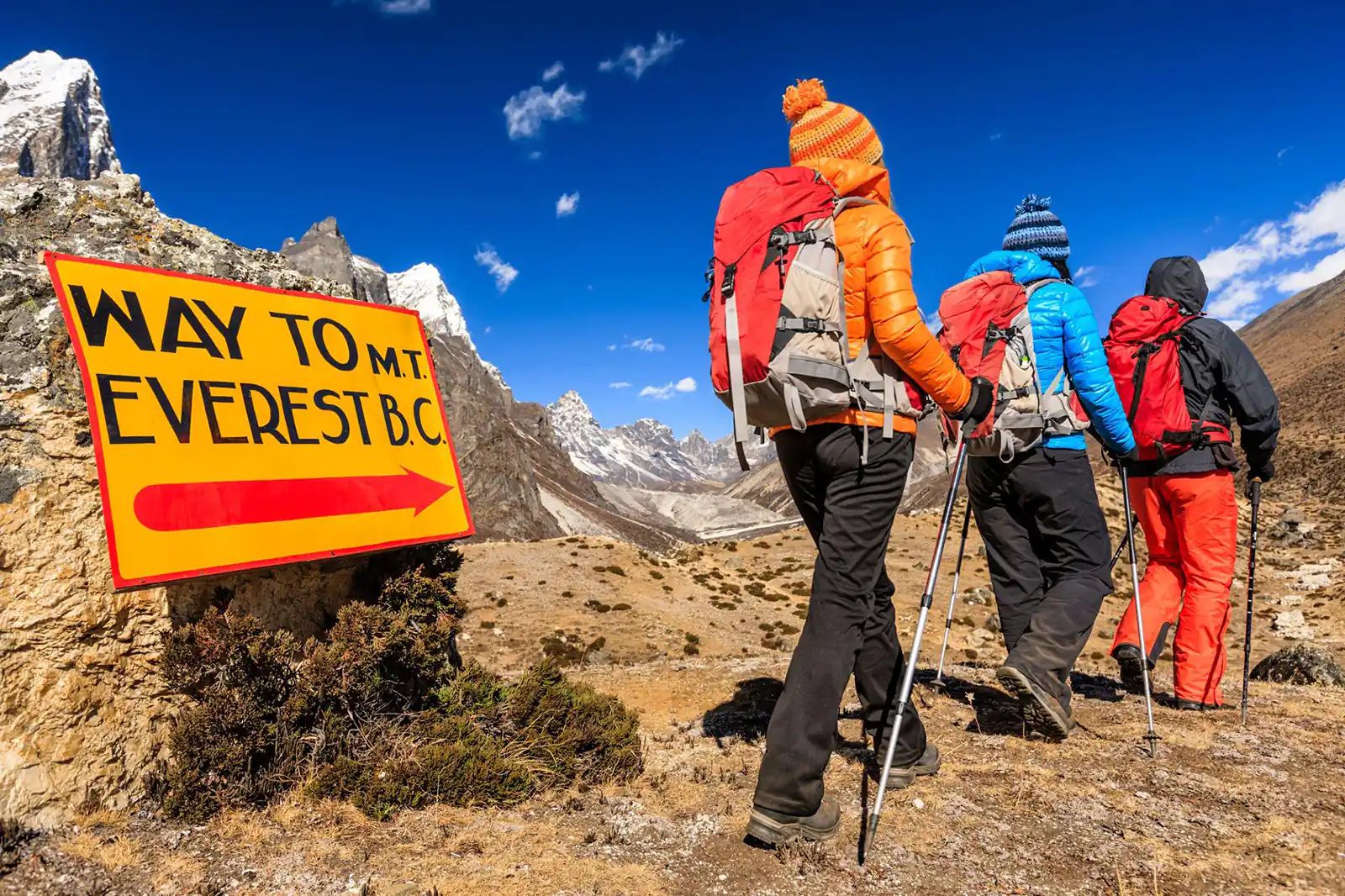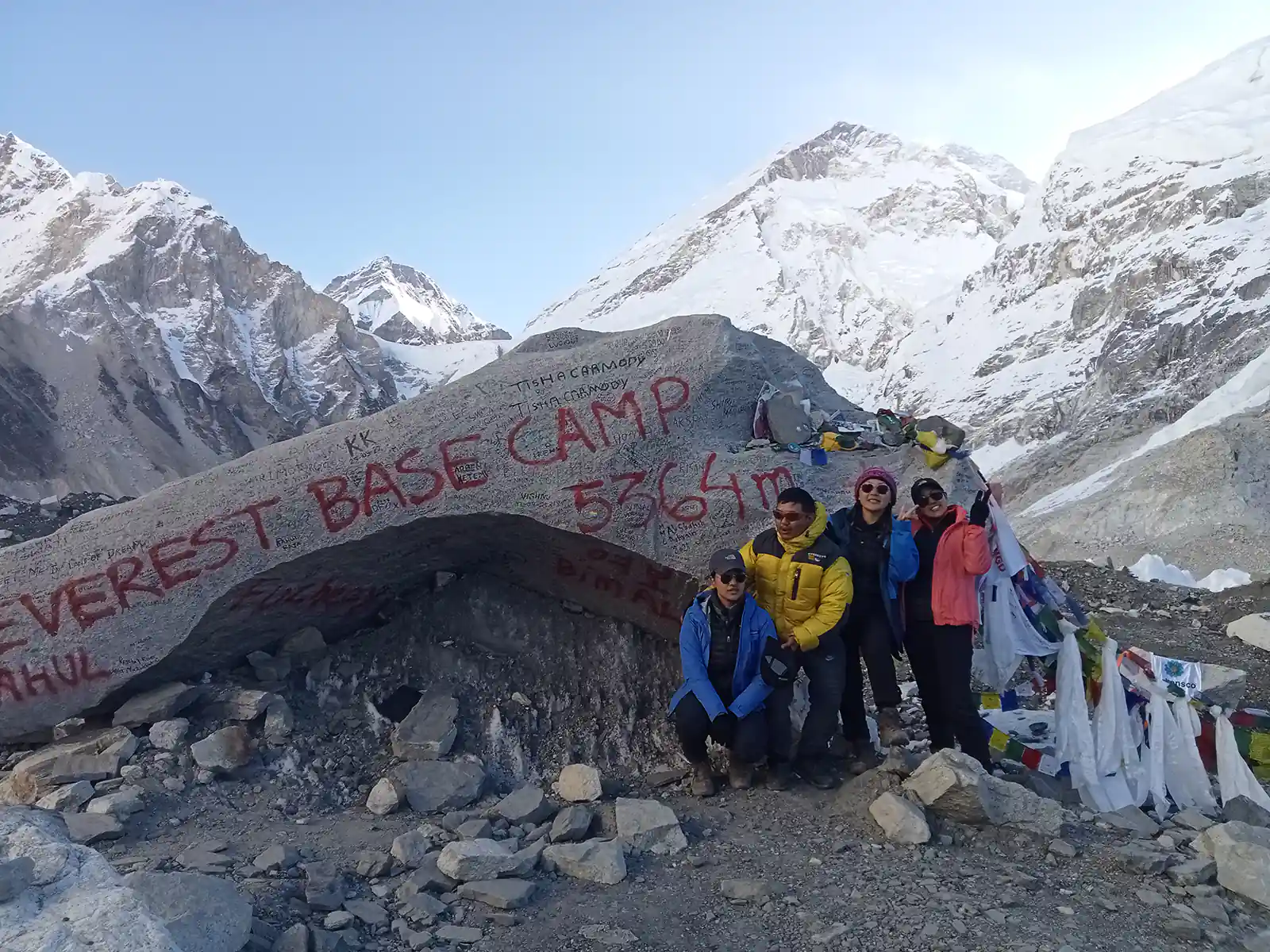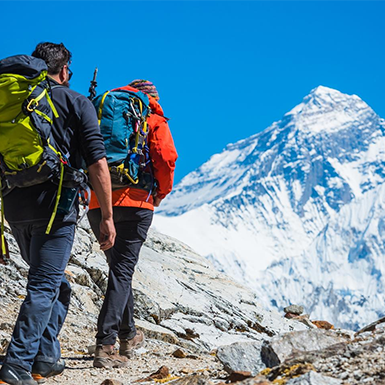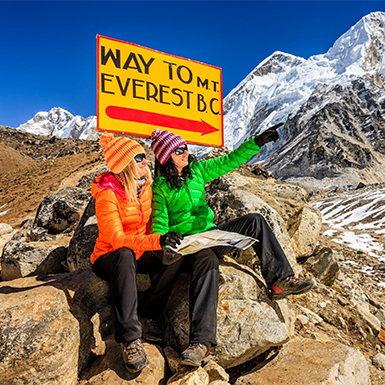Are you planning for Everest Base Camp Trekking and confused about what to expect? We are finally back from Everest Base Camp Trekking. It took us two weeks to complete it. The memories and experiences are unforgettable and worth it. Based on our experience, we would like to share some tips regarding EBC. Hence, these points would be helpful if you plan to Everest Base Camp Trekking.
Training & Preparation for the Trek
We do not have high altitudes and freezing temperatures in Singapore. To prepare for Everest Base Camp trekking, we did a few physical exercises: cardio, stairs training, and strength training. It would be better to have a few trek experiences; otherwise, no trek experience would also be excellent—all you have to do is prepare yourself physically and mentally.
Flying into the world’s most dangerous airport
We flew to Lukla from Kathmandu via the most hazardous airstrip in the world. I would consider it the first challenge of the trek. The runway is short and treacherous, situated on a cliff. The pilot does excellent work in landing safely and accurately on the track. I still remember the turbulence that made my heart chill.
Actual trek & terrain
We walked for 6-7 hours daily on our trails towards Everest Base Camp. The ground was mostly flat. We walked on some steeply inclined slopes as well. Although the terrain was undulating, Nepalese people called it flat. They claimed it was a Nepali Flat.
Tips: Don’t forget to get a pair of trekking poles when you go trekking. It will help to balance your weight between your legs and poles. Poles come in a handy size, readily available at any trekking shop.
We completed Everest Base Camp Trekking in two weeks. The length of days makes this trek a bit challenging and stressful. We must go through highs and lows battling the cold, AMS, and fatigue for at least 14 days. This trek was comparatively longer than Mount Kinabalu and Mount Rinjani, which we trekked last time.
Also, See:
Health & altitude sickness
When you trek to an altitude higher than 3000 meters, please be careful of acute mountain sickness (AMS). It is natural and does not neglect the symptoms. No matter how fit or young you are, it will eventually hit you on the trails. I had no appetite for almost seven days, could not sleep properly, and the headache was severe. During my trek, I depended on chocolate bars and warm water. My condition was so bad; that I almost got heli-evacuated back to Lukla by my guide. But in the end, I finally made it to EBC by curing the AMS.
Tips: To be safe from AMS, take Diamox pills before starting the trek. It will prevent you from any altitude sickness and has no side effects.
Apart from that, carry other prescribed medicines in the first aid box. Here is the list of the most probable medications that we brought for the EBC trek:
- Altitude sickness – Diamox
- Diarrhea- Metrodinazole and Electrolyte
- Flu/ Sore throat & cough – Acetaminophen (Tylenol) or medicines like Ibuprofen
- Nauseousness- Meclizine hydrochloride
- Antibiotics (for bacterial infections like food poisoning, throat infection, etc.)
- Panadol/ Ibuprofen for those that prefer without caffeine)

Mesmerizing views of the Himalayas
Walking daily for 6-7 hours is not easy. But that challenging climbing walk to the base camp is worth it when you see majestic Himalayan views. The picturesque Himalayas, including the world’s tallest and surrounding peaks, are awe-inspiring. Book your trip in the most probable season so the views and weather will bless you.
Water
We tried our best to be responsible and environment-friendly. Our agency advised us not to purchase plastic water bottles, so we used water purification tablets. The tablets didn’t have any strong aftertaste. We used a hydration pack and refilled two liters of water each time. Try to drink the maximum amount of water; it will help reduce symptoms of AMS.
Tips: You can either use purification tablets or liquid. We preferred using tablets which were easier to carry. You can find it anywhere in supermarkets or medical stores.
Food
The food choices along the trek trails are almost similar. You might have to eat the same food item every day. But the taste is not that bad as well. We liked chop suey (crispy fried noodles), Waiwai/ Rara noodles (Nepalese noodles), spaghetti, fried rice or Chowmein, and milk tea. You can also find yak cheese during your trek to EBC and the famous Butter tea.
Tips: Avoid meat if you can. Porters carry most of the flesh and take longer to reach the destination. Also, it remains frozen for months and could make you suffer from food poisoning if consumed. Instead, you can bring energy bars and chocolates. It will help you restrain your energy and keep you warm. You could also carry a few salty snacks to change the taste buds from sweet to salty. Try taking a mixture of dry fruits as well. All these extra foods will boost your energy while trekking. You can also have Daal Bhat twice daily, which is healthy and energetic.
Moreover, store your food properly while you sleep. There are numerous chances of being attacked by rats. They are horrible thieves. You don’t want to lose your special energy foods for horrible fat rats.
What to Expect on Everest Base Camp Trekking – Packing
People usually end up packing lots of things for their trek. Ultimately, they will only be using half of what they packed. Make sure you pack wisely and select essential things. Ask your agency whether they will provide a porter or not. Or else, you can check out our ultimate complete packing list for Everest Base Camp trekking. A porter can take about 25 kg of total baggage. Two trekkers have to share one porter, which means one can only have a maximum of 12.5 kilograms of luggage. So, don’t overpack and make that porter suffer.
When your porter carries your baggage, you can take a small day backpack of 20-30 liters. You can stuff that backpack with the hydration pouch, med kit, snacks, energy bars, and warm clothes. Don’t worry about the security of your baggage, as the porter will drop your belongings in your room once reaching the teahouses.
Showers and personal hygiene
You can quickly get a hot shower at a higher altitude, but you probably don’t want to take a shower risking your life. The cold breeze will make you shiver like hell. During our two weeks of the trek, we only had a shower twice at Namche Bazaar.
Tips: To keep yourself clean, you can use wet wipes, which are much more comfortable and hassle-free. Use with baby powder and dry shampoo could do best for ultimate situations. Due to the lack of running water availability, you won’t be able to wash your hands and face. Ask the restaurant. Don’t forget to carry lots of hand sanitizer and toilet paper. You will need it on every step of your trek.
Related Article

Accommodation
During the EBC trek, you will find the most common accommodation facilities with private rooms and some with attached bathrooms. Don’t expect the place to be heated or equipped with some heating machines. You should bring a perfect sleeping bag to keep you warm and sustain in the cold. Most tea houses are made of wood, meaning you will probably hear everything from the room next door. Try to avoid those noises and try to sleep well.
Tips: We suggest you buy a thermos to pour hot water into. You can drink it at night and in the morning to warm your body in higher elevations. You can also carry a multi-use water bottle, refill it with hot water, and keep it inside your sleeping bags. It will somehow prevent water from freezing.
Money & tipping
If possible, carry some spare dollars to use in an emergency. You can find many cash machines or ATMs in cities until Namche Bazaar. Those machines will charge you 5 USD per NRS.10,000 of transactions. There are minimal chances of finding cash machines when you go higher. Hence, it would be beneficial for you to carry some extras.
Your agency will cover most of your trek expenses. However, you must carry extra money to buy chocolates, energy bars, water, and, most often, a hot shower. Chocolates generally cost around 2-4 USD per bar, and hot water costs 3-4 USD per liter. The price varies according to altitude and resources available. Besides, separate some money to tip your guide and porter as well.
There is standard tipping in every agency. The most common tipping amount is 10% of the total trip cost. However, it depends upon the satisfaction of your trek and your heart.
For more information about the Everest Base Camp Trek, read our blog, “A Complete Guide to Everest Base Camp Trek.”
Which agency do we choose?
We booked our Everest Base Camp Trek from Peregrine Treks. This company is the most reputed and trusted trekking agency in Kathmandu, Nepal. A total of 15 days trip included a Kathmandu city tour and Everest Base Camp trek. They provided us with a professional trekking guide and a lovely porter.
Back in Kathmandu, Pradip responded and diligently handled all our queries. What impressed us was that Peregrine Treks usually organized smaller groups. It was much more natural and flexible to handle small groups. We made friendly new friends.
We had Nima Sherpa as our guide to accompany us on our trek. I remember how experienced and caring he was. He managed to organize our accommodation and food superfluously; it left us with zero complaints. Apart from Nima, our porters Tenzing and Lhakpa were superheroes. Despite the heavy luggage, they encouraged us to move further and reach our destination. They were “men of steel” and super friendlier.
Hence for the best result, choose a local trekking agency. It will help to generate local employment and increase the local economy.
Ms. Esther Darryl, who trekked Everest Base Camp in May 2023



